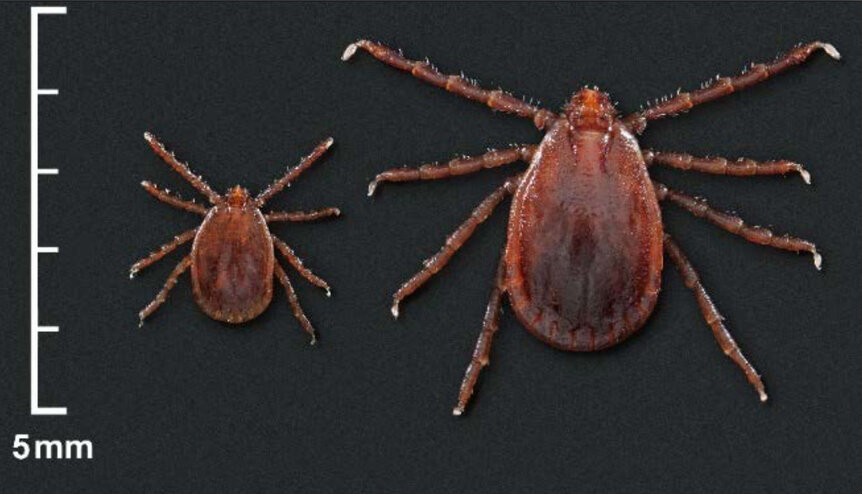Create a free profile to get unlimited access to exclusive videos, sweepstakes, and more!
Ticks Latch Onto Hosts with Electric Tractor Beams
Who made first contact with ticks?!
Way back in the halcyon days of 1999, one brave astronaut named John Crichton (Ben Browder) strapped himself to an experimental spacecraft and launched himself into space. The plan, as we learned on Farscape (now streaming on Peacock!), was to whip around the planet a few times and come back home, but Crichton tripped into a wormhole and landed himself on the other side of the cosmos.
Coming in for a landing across interstellar distances is no easy feat, and it helps to have a little guidance coming into the finish line. Fortunately for John, he ended up emerging near a living spacecraft called Moya, equipped with a device called a docking web, which guides incoming craft into the ship’s hangar. We might call it a tractor beam.
RELATED: Is Star Trek Tech Possible?
While tractor beams are largely the stuff of science fiction (although that might be about to change) it turns out ticks use a similar strategy to beam themselves aboard passing host animals, according to a study published in the journal Current Biology.
Ticks Use Static Charge to Hitchhike on Passing Animals
Picture this: You’re in the forest. It’s still dark but the first rays of sunshine are just now creeping over the mountains to the east. You’re in the thick of summer, always thirsty, always moving in search of food or water. You’re a young deer in your first or second year. The tall grasses and mountain shrubs are dry and scratchy, and they rub up against your fur as you patrol the forest.
You don’t know it, but you’ve picked up a pretty significant electric charge. The fur covering your entire body constantly rubs up against the environment, passing electrons back and forth. You don’t know it, but you’ve accidentally opened the door to a parasitic passenger.
All animals carry some level of electric charge on the surface of their bodies, but mammals and birds are particularly affected, thanks to their fur or feathers. And small animals like ticks can take advantage of that charge to leap aboard.
In the lab, researchers created voltages within the range regularly found in nature, then exposed tick nymphs to those voltages to see what would happen. In three out of four trials the tick zipped through the air and adhered to the charged surface. If you’ve ever rubbed your socks on the carpet and touched a doorknob, you’ll have a pretty good idea of what’s happening. When two oppositely charged objects interact, the charge imbalance wants to balance. It does that by giving you a little shock. The shock you see is literally electrons travelling across the gap between you and the doorknob and that force is capable of carrying an object like a tick nymph.
RELATED: The Best Sci-fi TV Shows on Peacock Right Now: Farscape, Mrs. Davis, Resident Alien & More
Researchers used dried rabbits’ feet and acrylic surfaces and placed them a few millimeters or a few centimeters from a tick nymph. At those distances, the nymphs were pulled through the air as if tugged upon by an invisible tether. Because, of course, that’s exactly what’s happening.
In later experiments, researchers were able to transport dead nymphs across a 10-centimeter (four inch) gap using an electric field comparable to the one on human skin. An electrostatic charge will even pull a tick directly against the force of gravity. Ticks can’t jump, but with electrostatic tractor beams they don’t need to.
Researchers note that other parasites which feed on or through host’s skin might also take advantage of the same mechanism to latch onto a tasty meal when one passes within a certain range. It’s not all bad news though, experts suggest that outdoor clothing treated with an antistatic spray could serve as a forcefield of sorts to defend against electrostatic interlopers.
Farscape, the complete series, is streaming now on Peacock!































